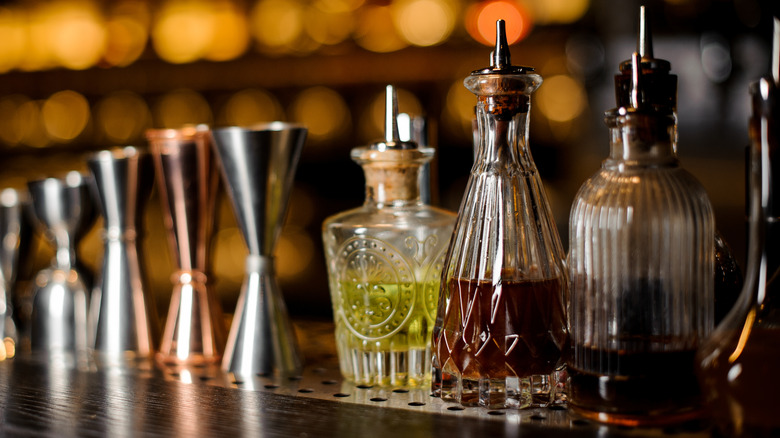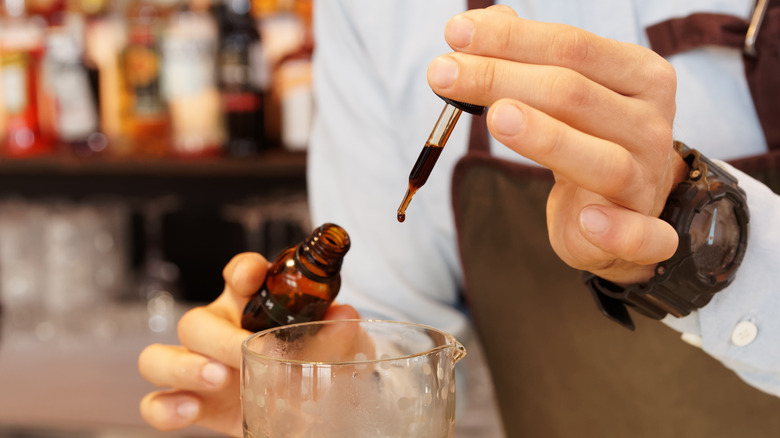How Much Alcohol Is Actually In Bitters?
That dash of bitters we add to our Old Fashioned may pack more of a punch than we realize. That's because, contrary to popular belief, the cocktail staple perched innocently on the supermarket shelf alongside alcohol-free mixers, such as simple syrup, ginger beer, and Bloody Mary mix, contains alcohol. Sure, it's just a little bit – insignificant enough to fly under the Alcohol and Tobacco Tax and Trade Bureau's standard for alcoholic beverages, but it's not free of alcohol. Instead, it falls into the same murky territory as vanilla extract.
Although bitters, and vanilla for that matter, contain a small amount of alcohol, they are defined as non-beverage products. That means, according to TTB standards, they're unfit to drink straight. So, bitters, like extracts used in cooking, are considered food products used to add flavor to cocktails. This explains why, according to The Bitter Housewife, bartenders sometimes call bitters the "salt and pepper of a cocktail" — good for enhancing, but not making, the perfect drink.
Let's do the math
Bitters, the all-encompassing name for this variety of botanical-infused alcohols, are available in myriad blends of spices, herbs, fruits, and roots — and with few exceptions, they are all alcohol-based. Why? That probably has something to do with their early use as a medicinal agent. Even the long-lived brand Angostura was initially developed as a treatment to alleviate stomach and digestive issues.
Somewhere along the line, bitters morphed from an alcohol-based elixir to a quick nip that even advocates of the Temperance movement were known to indulge in. This brings us full circle to the question at hand: How much alcohol is actually in bitters?
Cocktail and spirits expert Camper English explored the question in his blog Alcademics, centering the discussion around whether or not it's okay for bartenders to include a dash of bitters — the salt and pepper in their ingredient arsenal — in a drink made for someone who requests an alcohol-free beverage. To find out, he did the math.
Basing his research on bartender extraordinaire Don Lee's definition of a dash (41 dashes equals one ounce) and using Angostura bitters (44.7% ABV) as the control, English determined a 5-ounce mocktail (a beverage made entirely without other "alcohol-free" mixers that may contains trace amounts of alcohol) with two dashes of bitters would register an ABV of 0.45%, technically qualifying as an alcohol-free beverage. Alcohol-free enough for people living a sober life? That's a personal decision.

